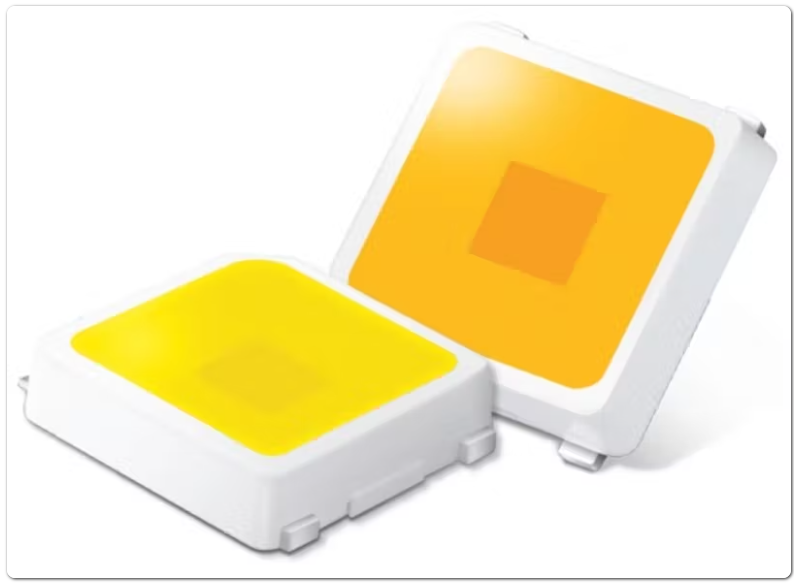Samsung, Lumileds, Bridgelux, Everlight
Samsung announces mid-power 3030 packaged LED hits 220-lm/W efficacy level while Lumileds expands its Level 2 strategy, and Everlight and Bridgelux begin IP squabble.
Samsung announces mid-power 3030 packaged LED hits 220-lm/W efficacy level while Lumileds expands its Level 2 strategy, and Everlight and Bridgelux begin IP squabble.
Samsung Electronics has announced a new version of the 3.0×3.0-mm LM301 packaged LED family that now delivers 220-lm/W efficacy at a drive current of 65 mA. Lumileds is moving to add features to its Level 2 Matrix light engines to further simplify the task of luminaire makers bringing new products to market. Everlight Electronics has filed a suit in United States District Court against Bridgelux, and now Bridgelux has said the Everlight claims are without merit.
Interested in articles & announcements on packaged LED developments?
Samsung mid-power LEDs
Over the course of the past couple of years, Samsung seems to have focused more on the performance of its 5630 (3.6×3.0 mm) LM561 packaged LED family than on the LM301 family in its mid-power portfolio. Last year, the company pushed efficacy in the performance-oriented LM561C to the 200-lm/W level. Now, however, Samsung has surpassed prior efficacy milestones with the LM301B announcement, significantly topping the 200-lm/W level.
“With our LM301B, we are able to deliver even greater mid-power value and help lower the total cost of ownership for LED lighting manufacturers,” said Jacob Tarn, executive vice president of the LED business team at Samsung Electronics. “Thanks to advancements like the LM301B, Samsung will continue to drive innovation in next-generation LED technologies.”

Samsung's LM301 packaged LED family achieves 220-lm/W efficacy.
Samsung said the new performance level was achieved based on a flip-chip architecture and with the help of new phosphor technology. The maximum efficacy was achieved at a relatively low drive current, and the company has yet to publish a datasheet on the LM301B that details how the LED performs at higher current levels that might be more representative of a real-world lighting application. The efficacy level was reached with a relatively high 80 CRI but also with a cool 5000K CCT. Samsung says the product delivers a 10% performance advantage over competing 3030 LEDs.
It remains extremely difficult to compare LED performance when contemplating components from different vendors. Although standards such as LM-80 define test methods, the standards do not define specific current levels at which maximum performance is claimed. Seoul Semiconductor, for instance, said it hit 210 lm/W a year ago in 5630 LEDs and at that time said it would surpass 220 lm/W in less than a year. And in that same story, we covered an Everlight Electronics announcement that claimed it had already achieved 220 lm/W.
Lumileds expands Level 2
Meanwhile, the trend of LED manufacturers pushing Level 2, or modular light engine products in printed-circuit board (PCB), formats continues. Lumileds was an early and avid supporter of such Level 2 products starting back in 2014. And the Level 2 approach will become more widespread as chip-scale package (CSP) LEDs become more prevalent in lighting applications.
Lumileds calls its Level 2 portfolio Matrix. And most recently the company augmented the light engine portfolio with some technology initiatives that directly and indirectly impact luminaire manufacturers that are Matrix customers.

 中文
中文 English
English


 +86 18823380185
+86 18823380185  0755-29355002
0755-29355002 